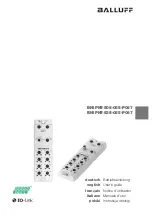
System
6000
TM
Reference
Manual_Section
6
© SAFLOK
Page
30
of
34
06/11
Code
Description
163
Standard
Key:
Opening
key,
clock
reset
hassle.
Lock
level
for
this
key
is
hassled
when
the
lock’s
clock
needs
resetting,
this
key
did
not
performance
special
function
and
was
not
allowed
to
open
the
door.
Use
the
key
again
to
open
the
door.
Reset
the
lock’s
clock
to
clear
the
problem.
164
Standard
Key:
Opening
key,
clock
reset
hassle.
Lock
level
for
this
key
is
hassled
when
the
lock’s
clock
needs
resetting.
This
key
did
perform
a
special
function
(inhibit
levels
or
electronic
lock)
but
was
not
allowed
to
open
the
door.
Use
the
key
again
to
open
the
door.
Reset
the
lock’s
clock
to
clear
the
problem.
165
Special
Key:
Key’s
main
function
equals
3
(invalid).
Contact
SAFLOK
for
assistance.
166
Special
Key:
Re
‐
sequence,
Inhibit
or
Uninhibit
a
key.
Lock
level
is
non
‐
operating
for
this
key’s
level.
Key
does
not
belong
to
this
lock.
167
Special
Key:
Re
‐
sequence,
Inhibit
or
Uninhibit
a
key.
Lock
level
is
batch
operation.
Special
keys
are
not
allowed.
Replace
key
with
an
unused
sequence.
168
Special
Key:
Uninhibit
a
key.
Lock
level’s
operation
indicates
intra
level
auto
inhibiting
with
new
keys.
Uninhibiting
a
key
is
not
allowed.
Replace
key
with
a
new
key.
169
Special
Key:
Uninhibit
a
key.
Lock
level’s
function
indicates
inter
level
auto
inhibiting
with
new
keys.
Uninhibiting
a
key
is
not
allowed.
Replace
key
with
a
new
key.
170
Special
Key:
Re
‐
sequence
a
key.
Key
is
valid
but
did
not
do
anything.
Lock
was
already
in
sequence
with
computer’s
current
key.
171
Special
Key:
Inhibit
a
key.
Key
is
valid
but
did
not
do
anything.
Lock
was
already
in
sequence
with
computer’s
current
key
and
key
was
inhibited.
172
Special
Key:
Uninhibit
a
key.
Key
is
newer
than
the
key
information
stored
in
the
lock’s
memory.
It
is
not
necessary
or
possible
to
uninhibit
a
key
which
has
not
been
used
yet.
173
Special
Key:
Uninhibit
a
key.
Lock
level’s
programming
indicates
that
the
level
is
inhibited
(all
keys
are
inhibited)
and
there
are
other
keys
on
this
level.
Can’t
uninhibit
the
key
until
the
level
is
uninhibited.
To
uninhibit
a
key,
make
and
use
a
new
standard
level
key.
174
Special
Key:
Uninhibit
a
key.
Key’s
valid
but
did
not
do
anything.
Lock
was
already
in
sequence
with
computer’s
current
key
and
key
was
not
inhibited.
175
PPK
and
SPK
Key:
When
used
in
a
programming
cycle,
it
indicates
that
the
key
is
not
mastered
into
the
lock
and
the
PPK
or
SPK
key
used
to
start
the
program
cycle
was
not
authorized
to
remaster
the
key.
When
used
in
other
than
a
program
cycle,
it
indicates
that
the
key
is
not
mastered
into
the
lock.
The
key
does
not
belong
to
this
lock.
176
PPK
and
SPK
Keys:
None
of
the
key’s
3
combinations
matched
the
lock’s
current
combination.
The
key
is
either
too
old
or
too
many
new
keys
were
made
and
never
used.
If
key
is
a
current
key,
it
must
be
reprogrammed
into
the
lock
using
a
valid
SPK
or
PPK.
Содержание Saflok SYSTEM 6000
Страница 1: ...REFERENCE MANUAL SYSTEM 6000 ...
Страница 2: ...SAFLOK TRAINING AND REFERENCE MANUAL SAFLOK SYSTEM 6000 WINDOWS VERSION 3 ...
Страница 4: ...Section 1 Introduction to System 6000 ...
Страница 9: ...SECTION 2 System 6000 Installation and Configuration ...
Страница 35: ...SECTION 3 Lock and Keycard Features ...
Страница 59: ...System 6000 TM Reference Manual_Section 4 Section 4 Lock Operation SAFLOK Page 1 of 16 06_11 ...
Страница 75: ...System 6000 TM Reference Manual_Section 5 Section 5 System 6000 Transactions ...
Страница 99: ...System 6000 TM Reference Manual_Section 6 Section 6 Diagnostics Error Codes ...




































